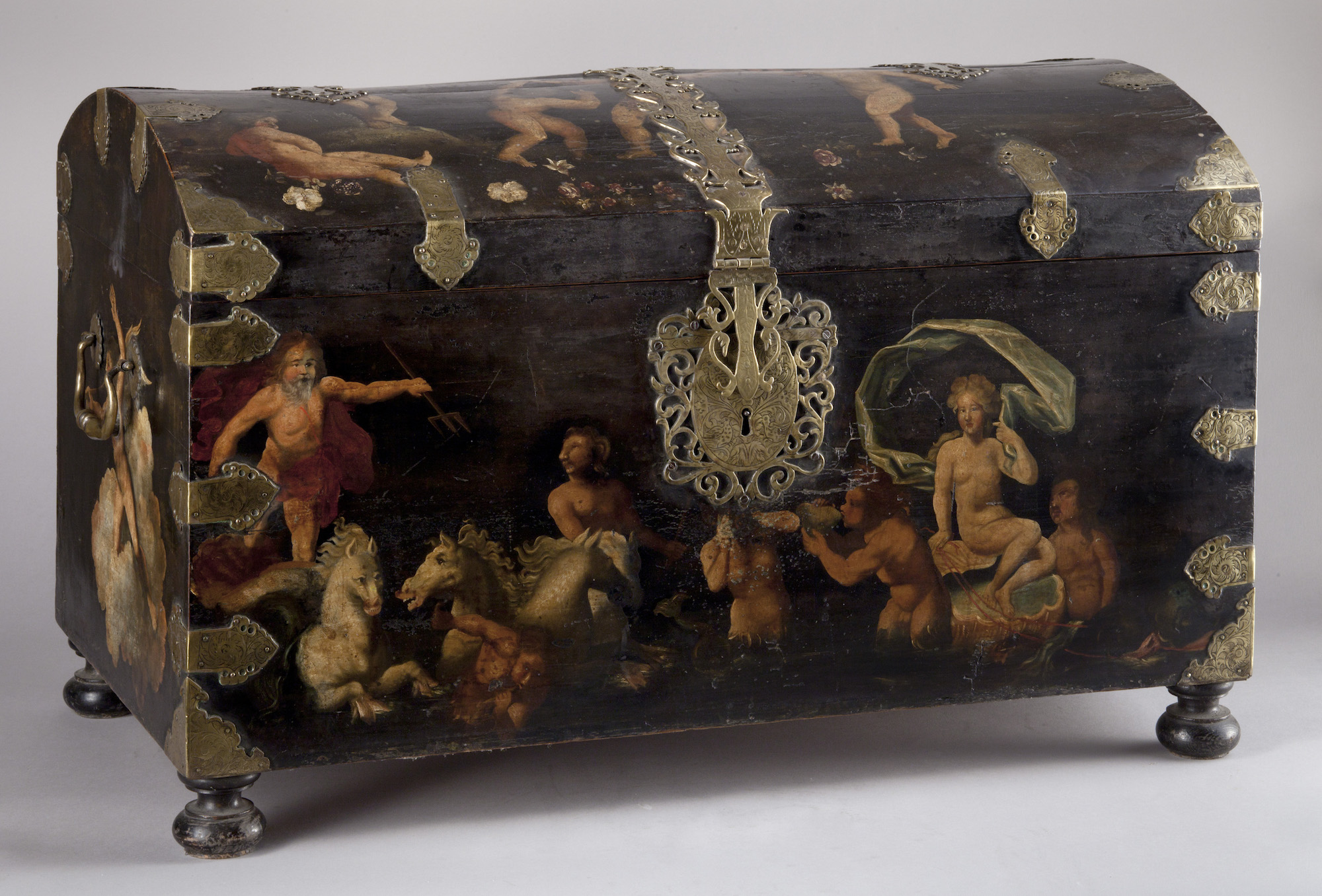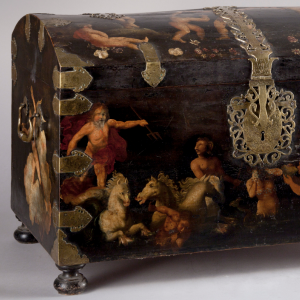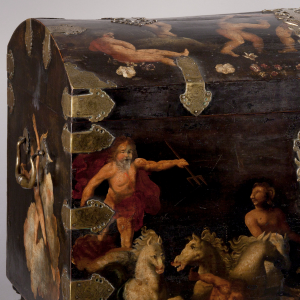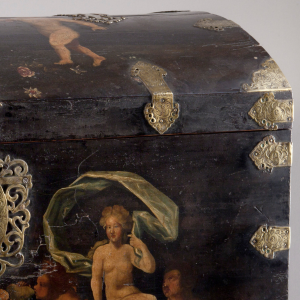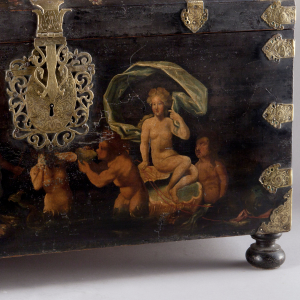Chest
Author: Unknown
Origin: Unknown
Dating: 18th century (?)
Material: Wood (Exotic & Pine) & Brass
Dimensions (cm): 53,8 x 91 x 46,5
Inv. no.: PD0426
«In Oates’ “History of Western Furniture”, the Chest is highlighted for its importance and for the interest it sparked in artists: “The most prestigious and elaborate piece of Italian Renaissance furniture was the cassone, the traditional wedding chest. […] The cassoni played an important role as symbols of social status during [wedding] ceremonies. They were usually commissioned in pairs […] one featuring the bride’s coat of arms and the other the groom’s […]. Botticelli […] and Donatello painted cassoni panels. The themes depicted were highly varied: the most common were scenes from the lives of Christian saints, or from classical mythology […], battle scenes, tournaments, triumphal processions; and allegories representing the elements of Nature, the seasons and the virtues” (OATES, 1991: 53).
The chest […] is entirely embellished with paintings from Greek mythology – with the exception of the side that faces the wall – depicting Amphitrite and Poseidon – the gods of the sea – and pictorially narrating the scene of their union.
According to mythology, Poseidon (Neptune) fell in love with the nymph Amphitrite (Salacia) when he saw her dancing with her Nereid sisters (daughters of Nereus and Doris). He tried to abduct her, but Amphitrite had taken a virginity vow and, in fear, she fled and took refuge under the protection of her father – the god of the Mediterranean and the Aegean Sea. She was located by dolphins and the marine divinities led her to Poseidon, who married her and made her queen of the seas (MÉNARD, 1991: 194, 1st vol.).
On that account, the scene depicted on this chest can be read starting with the lid, where Amphitrite is represented with her Nereid sisters, dancing to the sound of what seems to be a horn. Among the six nymphs, one may identify Amphitrite as the one holding the veil.
On the front, one may see the arrival of Amphitrite before Poseidon to consummate their union. The nymph is naked and seated in her shell chariot, holding a veil in one hand – similar to the one in the lid – and the other holding the reins of the dolphins that pull the chariot. Poseidon – with his trident in hand – is atop his horse-drawn chariot driven by two tritons. In mythological history, the tritons played conches to calm sea waves, so the chariot would sail better.»
Eduardo Magalhães
“Music in the Palace’s Collections”
«[O]ne may see two figures playing the instrument [conch], next to Amphitrite. The figure closest to the goddess, displays diferences when compared to the other: with legs and visible genitals, unlike the other which seems to have no legs. Thus, this figure seems more like a putto than a triton. Even without the wings, it could be a representation of Eros – the son of Venus and Mars. It may then be presumed that the playing of the conches to calm the waves is by a triton and by Eros – the god of eroticism and love. The conch played by the triton can be determined by the position of the hands, considering the painting is somewhat deteriorated.
On both side tops of the chest, two similar winged boys are represented, who should be, in all probability, the representation of Eros – playing a horn that resembles the one played by the nereid on the lid. The painting reproduced on both areas is the same. The only difference is that the Eros on the top right area is slightly larger. While the conches may be […] calming the waves of the sea, these two representations are clearly announcing or celebrating the union of the god with the nymph.
Conches were instruments already used in the Neolithic period for signalling and during war. In Greek mythology, they are known as triton conches for mythology attributes their invention to Triton – the son of Poseidon and Amphitrite. As the opening of the conches reminisces the female sexual organ, they were also used in fertility rituals, including wedding rituals (ANDRÉS, 2009: 90).»
Eduardo Magalhães
